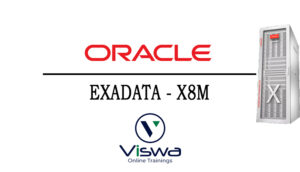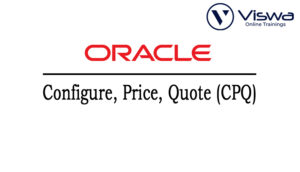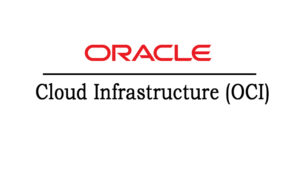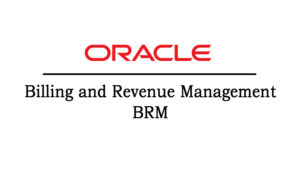IBM WebSphere MQ Certification Training
One of the top providers of online IT training worldwide is VISWA Online Trainings. To assist beginners and working professionals in achieving their career objectives and taking advantage of our best services, We provide a wide range of courses and online training.
Learners : 1080
Duration : 30 Days
About Course
The fundamental elements of IBM WebSphere MQ and the route messages take as they are transferred between apps. You also discover how managing topic-based publish/subscribe messaging, controlled file transfer, and cloud installations can be included in the administrative duties associated with IBM WebSphere MQ. An overview of IBM MQ’s support for security, publish/subscribe, high availability, administration, logging, auditing, controlled file transfer, MQTT, and cloud alternatives are among the topics covered.
IBM WebSphere MQ Training Course Syllabus
✔ What is Message Queue
✔ What is a Message and Queue
✔ Types of Messages
✔ Synchronous Vs Asynchronous
✔ Installation Overview
✔ Creating Users and Groups
✔ Product Directory Structure
✔ Disk Space requirements
✔ Installing Server
✔ Supports Pacs
✔ Uninstalling Server
✔ Migration and Upgradation
✔ Creating Queue Manager
✔ Starting Queue Manager
✔ Stopping Queue Manager
✔ Deleting Queue Manager
✔ Displaying Queue Manager Status
✔ Queue Manager Properties
✔ Automatic Startup
✔ Communicating between Queue Managers
✔ Introduction
✔ Local Queue
✔ Transmission Queue
✔ Remote Queue
✔ Alias Queue
✔ Model Queue
✔ Queue Default Options
✔ Introduction
✔ Listeners
✔ Types of Channels
✔ Channel Pairing
✔ Channel Triggering
✔ Introduction
✔ Channel Triggering
✔ Initiation Queues
✔ Trigger Event and Trigger Condition
✔ Application Triggering
✔ Trigger Monitor
✔ Process
✔ Introduction
✔ Advantages of Clustering
✔ Cluster Repository
✔ Clustering Best Practices
✔ Cluster Work Load Balancing
✔ Sending Message to a Cluster Queue
✔ Remove Cluster Queue Manager from Cluster
✔ High Availability Cluster
✔ Security Objectives
✔ Achieving Security Objectives thru WMQ
✔ General Security Principals
✔ Channel Security with SSL
✔ Channel Authority Records
✔ Why MQ Client
✔ MQ Client Configurations
✔ MQ Channel Definition Table
✔ Introduction
✔ Types of Logging
✔ Logging Configuration
✔ Log sizing
✔ Log Archiving
✔ Troubleshooting Steps
✔ Backing up MQ Configuration and Data
✔ Checkpoint Recovery
| Live Instructor Based Training With Software |
| Lifetime access and 24×7 support |
| Certification Oriented content |
| Hands-On complete Real-time training |
| Get a certificate on course completion |
| Flexible Schedules |
| Live Recorded Videos Access |
| Study Material Provided |
IBM WebSphere MQ Training - Upcoming Batches
Coming Soon
AM IST
Coming Soon
AM IST
Coming Soon
PM IST
Coming Soon
AM IST
Don't find suitable time ?
CHOOSE YOUR OWN COMFORTABLE LEARNING EXPERIENCE
Live Virtual Training
-
Schedule your sessions at your comfortable timings.
-
Instructor-led training, Real-time projects
-
Certification Guidance.
Self-Paced Learning
-
Complete set of live-online training sessions recorded videos.
-
Learn technology at your own pace.
-
Get access for lifetime.
Corporate Training
-
Learn As A Full Day Schedule With Discussions, Exercises,
-
Practical Use Cases
-
Design Your Own Syllabus Based
IBM WebSphere MQ Training FAQ'S
A key element of WebSphere MQ or WMQ is QueueManager. The QueueManager is in charge of keeping track of messages, directing them to other Queue Managers within MQ, and communicating with external parties like Java programmes or other MQ clients.
To communicate with other queue managers in WebSphere MQ or WMQ, queue managers use channels. In the MQ Series, channels are unidirectional and carry just one direction of traffic. In MQ, you can either have a transmitting channel or a receiving channel.
In WebSphere MQ, a dead letter queue is a queue that QueueManager uses to archive messages for a nonexistent queue. Examples include QueueManager QMGR, which receives messages for queue ABC and routes them to the dead letter queue if queue ABC didn’t exist on that queue manager.
By learning through VISWA Online Trainings, advance in your job.
An additional intriguing and common WebSphere MQ interview question. If you linked MQ through SSL, you could easily respond to this MQ query. Typically used as the DN (Distinguished Name) of the MQ Client while securely connecting to QueueManager via QueueManager, SSLPEER is a String. This system is how WMQ recognizes its customers. SSLPEER is the DN of the client certificate saved in the keyStore and sent to the server during the SSL handshake in the case of Java or JMS clients.
Although not typical or usually asked in MQ Interviews, this question is useful to know. When MQ clients are placed on the same physical server as QueueManager, binding connections can be made more quickly than client connections, which are often made by MQ clients located on the same network but not the same host. The majority of applications connect to QueueMangaer using MQ client connections, which are quick and adaptable.
Reviews
 Lavanya Posina2024-09-30To get the SAP S4HANA MM training is really worth from VISWA Technologies. I would like to thank you for providing an excellent training.
Lavanya Posina2024-09-30To get the SAP S4HANA MM training is really worth from VISWA Technologies. I would like to thank you for providing an excellent training. Krishna Grandhi2024-09-19I attended PBCS course. Trainer has good knowledge and his explanation is easy to understand. The support team is also supportive during the training period. Overall experience is good.
Krishna Grandhi2024-09-19I attended PBCS course. Trainer has good knowledge and his explanation is easy to understand. The support team is also supportive during the training period. Overall experience is good. Siddhartha Mothukuri2024-09-10Learnt SAP EWM and it has been a really good experience with VISWA Online Trainings and trainer has been excellent in terms of his understanding in business as well as SAP. Thank you
Siddhartha Mothukuri2024-09-10Learnt SAP EWM and it has been a really good experience with VISWA Online Trainings and trainer has been excellent in terms of his understanding in business as well as SAP. Thank you Lakshmiprasanna Annem2024-08-01Thanks chaitanya arrange for sap bw on Hana job support. I will recommend definitely anyone.
Lakshmiprasanna Annem2024-08-01Thanks chaitanya arrange for sap bw on Hana job support. I will recommend definitely anyone. VINOD reddy2024-07-23Amazing Oracle Transportation Management (OTM) training! Definitely recommend.
VINOD reddy2024-07-23Amazing Oracle Transportation Management (OTM) training! Definitely recommend. Arvind P2024-06-28Good institute. Very responsible. As a trainer I got a good experience with them
Arvind P2024-06-28Good institute. Very responsible. As a trainer I got a good experience with them srinivasulu p2024-05-14I have recently enrolled azure cloud security training. There was lots of interaction sessions. It was best online learning platform.
srinivasulu p2024-05-14I have recently enrolled azure cloud security training. There was lots of interaction sessions. It was best online learning platform. Mahendra Reddy2024-05-14I would definitely recommend it anyone looking for generative AI course. This is friendly course thanks phani kumar
Mahendra Reddy2024-05-14I would definitely recommend it anyone looking for generative AI course. This is friendly course thanks phani kumar




